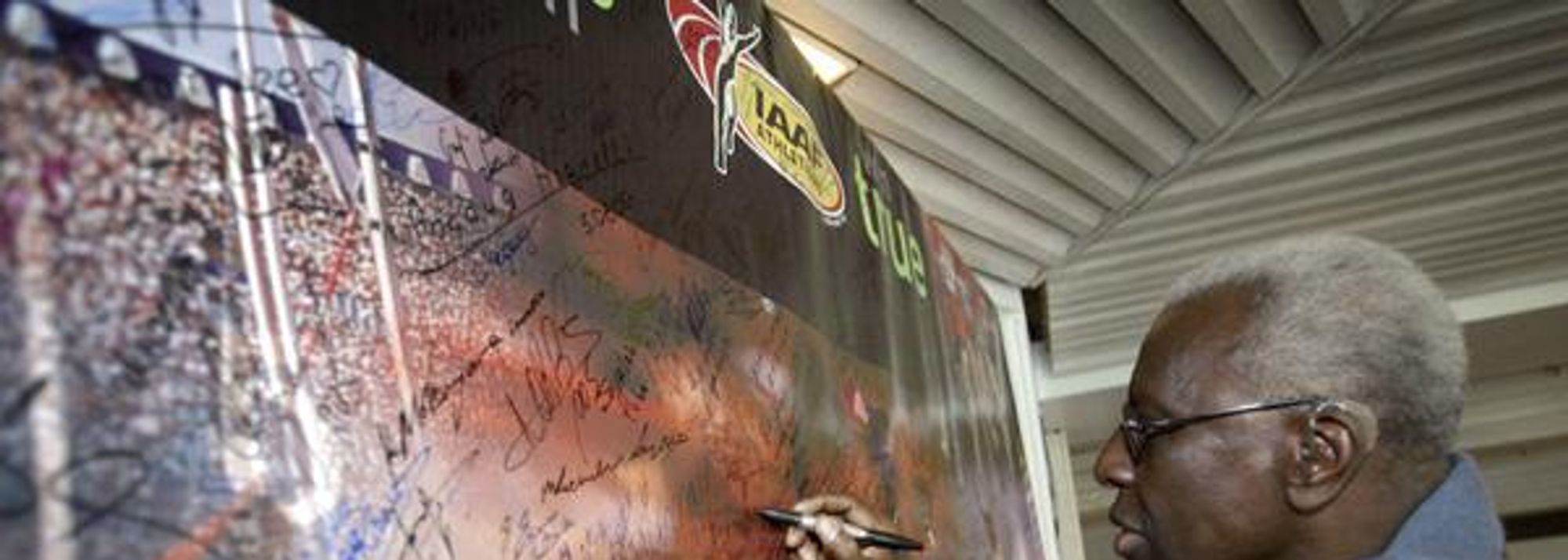Lamine Diack signs the Outreach athletes' board in the village (© Hannu Jukola)
MonteCarloThe IAAF is pleased to confirm that the 2005 World Championships in Athletics, Helsinki saw the implementation of the largest ever anti-doping programme at an athletics event. The programme included both testing and education.
In total, 884 tests were carried out both prior to and during the championships on a total of 708 individual athletes, which was a greater number of tests than originally planned. In total, 1849 athletes participated at the World Championships.
Testing conducted during the period of 2-12 August (out-of-competition) at the athletes village focused on gathering haematological blood profiles and screening blood samples for the indication of EPO abuse. The total number of tests conducted pre-competition was 416 which included 42 urine tests.
During the championships themselves a total of 468 tests were conducted. Of these tests, 217 were urine tests for the detection of EPO, and a further 105 were blood samples taken for the detection of blood transfusions.
There were two positive tests recorded during the championships: Discus Thrower Jawant Singh IND, whose positive result for Pemoline (S6 stimulants) was announced during the competition, and Hammer Thrower Vladyslav Piskunov UKR, who tested positive for Drostalone (S1 Anabolic Agent) on 8 August, and whose positive was confirmed after the Championships ended. The results management process is currently ongoing in both these cases according to IAAF rules.
1100 Athletes visit Anti-doping Education Stand in Athletes’ Village
The IAAF, in conjunction with the World Anti-Doping Agency (WADA), also presented an Athlete Outreach Programme aimed at informing and educating athletes on a wide range of anti-doping issues.
Over 1100 athletes and support personnel directly participated in this hugely successful programme, while 100’s of other athletes viewed the programme and collected information pamphlets during their stay in the athlete’s village.
The significant effort and planning required to complete this anti-doping programme in Helsinki will now provide the perfect platform for the IAAF to once again increase its anti-doping work in the future. The data and feedback collected through testing and communication with athletes at these championships will be used to make smarter and more informed decisions regarding the continued implementation of the IAAF anti-doping programme.
IAAF President Lamine Diack said: “I am pleased to see that the massive efforts carried out in Helsinki, with more testing than ever before, has resulted in just two positive cases. I am also very pleased to see that our debut efforts to provide an educational forum for athletes in the Village proved to be extremely popular with the athletes themselves. With additional staff, resources and expertise in the anti-doping department, the IAAF is perfectly placed to use the information that it has gained in Helsinki and continue to take a leading role in the fight against doping in sport.”
IAAF



